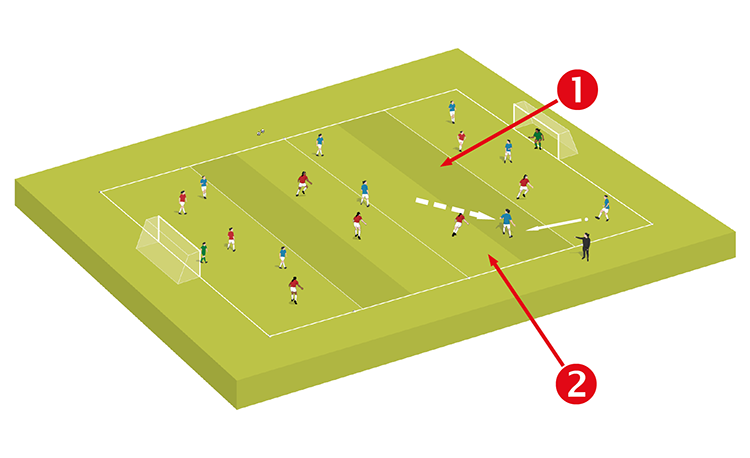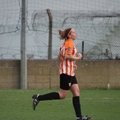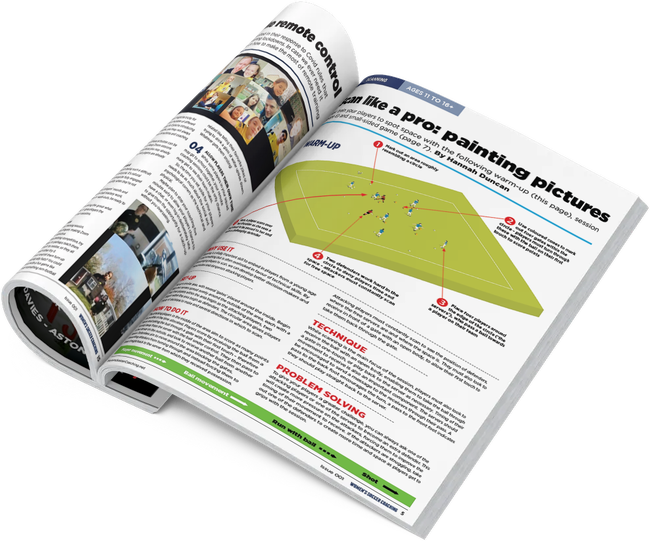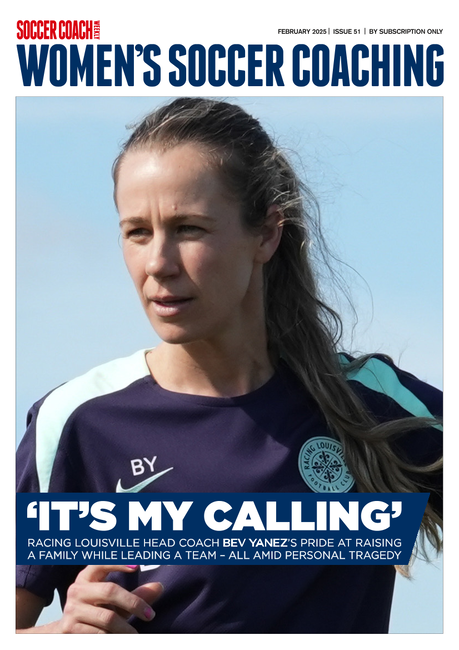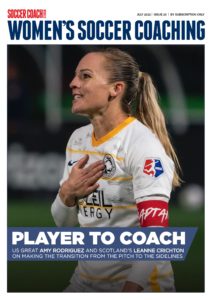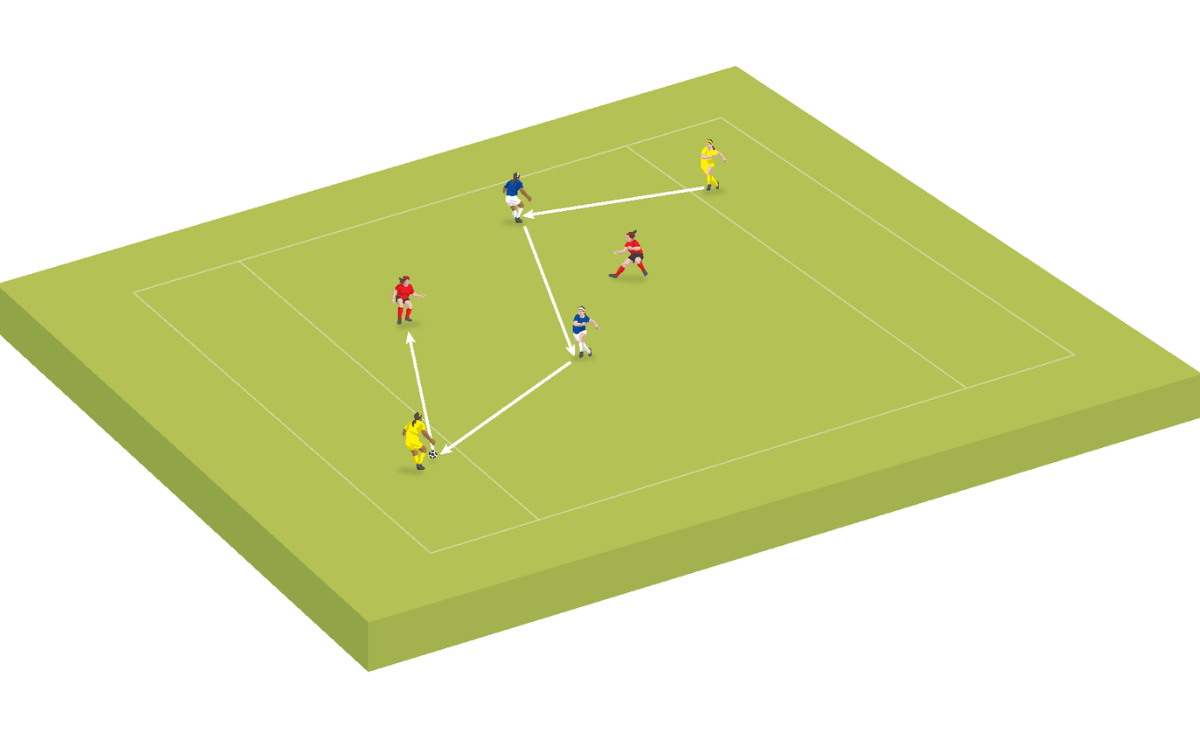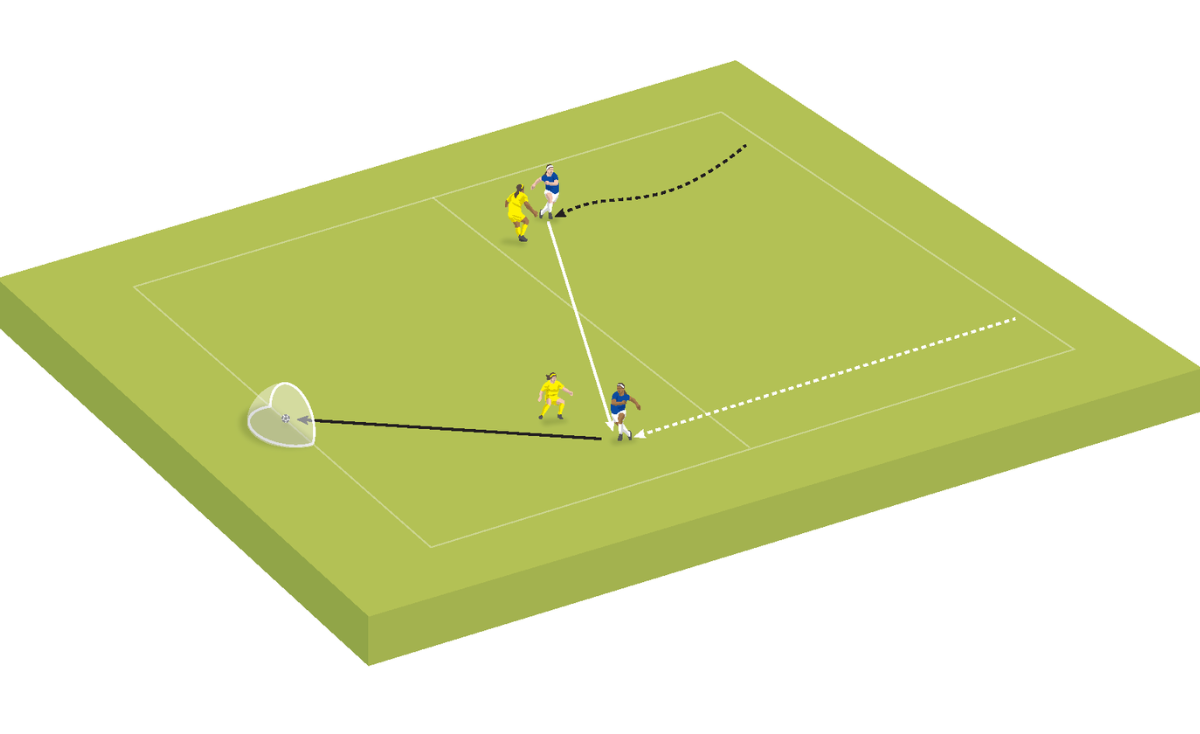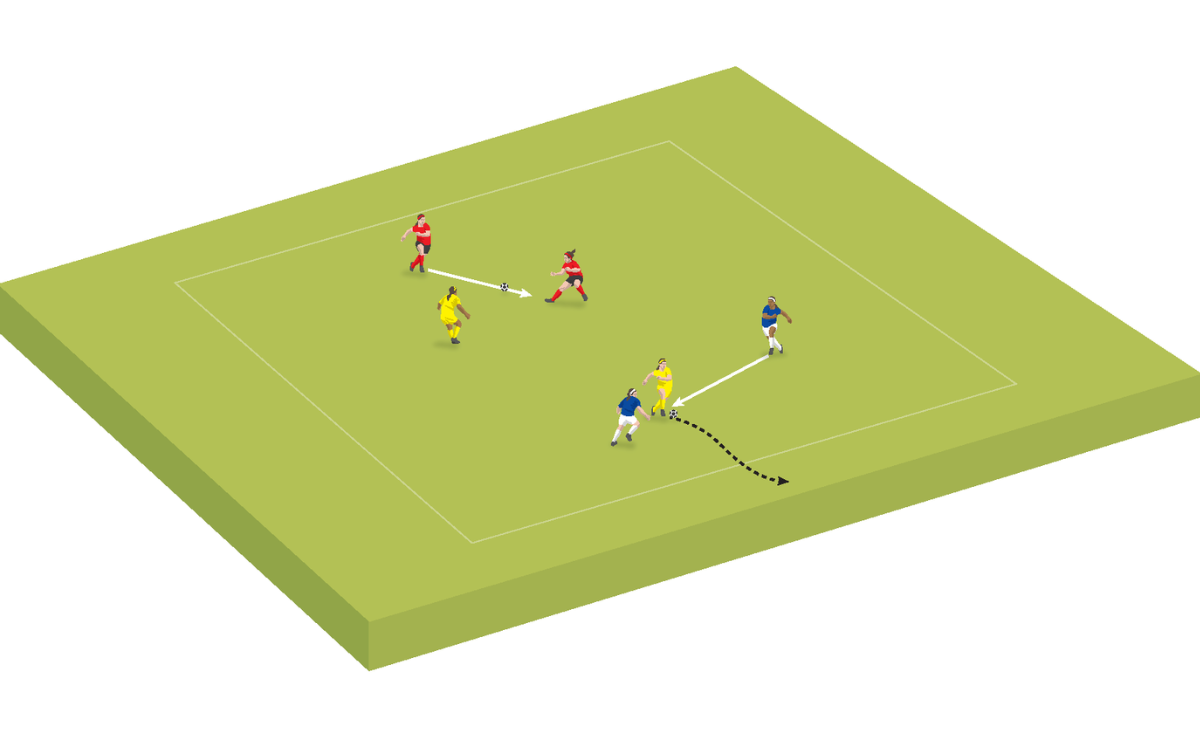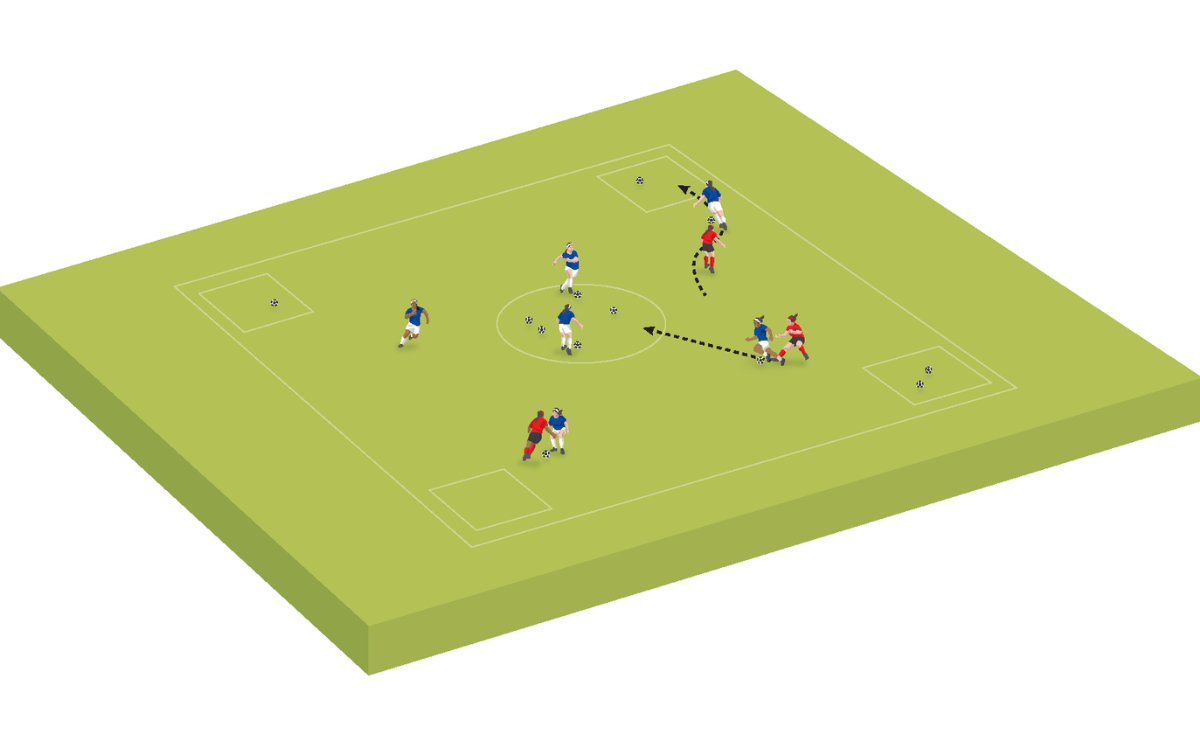You are viewing
1 of your 3 free articles
Learn to scan like a pro - Practice
Soccer Drills & Gamesby Hannah Duncan
Put your players’ scanning and receiving skills to the test in this small-sided game.
WHY USE IT
This practice allows players to see the importance and effect of scanning in a realistic game, with goals, designated formations and positions. The set-up enables early success, before adding a greater challenge.
The game also allows teams to work on midfield rotation and timing of movement to receive.
SET-UP
Set up a three-quarter sized pitch (depending on numbers), separated into thirds, with each third divided by a ‘safe zone’. Divide players into two equal teams - each team should play with an overload in their defensive third and with equal numbers in the midfield third (for example 1–3-3-2, or 1-2–3-1, depending on numbers).
HOW TO PLAY IT
Set your two teams up in their formations. The two ‘safe zones’ should be clear of players. Normal game rules apply, but players can only advance the ball into the next third (from defence to midfield, or midfield to attacking third) via a player from the more advanced third dropping into the ‘safe zone’ to receive the ball.
That player can then travel into their third with the ball, or pass it in. To start with, the team out of possession cannot enter the ‘safe zone’.
Players from the team in possession cannot wait for more than a couple of seconds in the ‘safe zone’ without receiving possession. This encourages good timing of movement and midfield rotation.
TECHNIQUE
Players need to time their movement to receive possession and look to receive with an open body, while scanning to determine the position of opponents, their own team-mates and the space available.
Those passing the ball should send a message with the pass – effectively telling the receiver whether they can turn, should play backwards or protect the ball.
With older or more advanced groups, this small-sided game also presents an opportunity to work on rotations of a midfield three, as one midfielder could drop into the ‘safe zone’, dragging a defender out, before rotating with a second midfielder who then drops in to receive the ball.
ADAPTATIONS
Progress the session by allowing a defender to follow an attacking player into the ‘safe zone’ to present more of a challenge, or make the ‘safe zone’ smaller to challenge players’ timing of movement.
For advanced players, or those you want to encourage to be more creative, a further condition could be that once players receive the ball in the ‘safe zone’, they cannot play backwards.
1. Mark out two ‘safe zones’ roughly midway inside each half of your playing area. No player may be in it unless dropping deep to receive the ball
2. This is the key player here. They should scan as they enter the ‘safe zone’ to check for space to move into, or positions of opponents and team-mates, when they receive the ball
Related Files
WSC-001-learn-to-scan-like-a-pro-practice.pdfPDF, 139 KB
Newsletter Sign Up
Newsletter Sign Up
Discover the simple way to become a more effective, more successful soccer coach
In a recent survey 89% of subscribers said Women's Soccer Coaching makes them more confident, 91% said Women's Soccer Coaching makes them a more effective coach and 93% said Women's Soccer Coaching makes them more inspired.
*includes 3 coaching manuals
Get Inspired
All the latest techniques and approaches
Women's Soccer Coaching offers proven and easy to use soccer drills, coaching sessions, practice plans, small-sided games, warm-ups, training tips and advice.
We've been at the cutting edge of soccer coaching since we launched Soccer Coach Weekly in 2007, creating resources for the grassroots youth coach, following best practice from around the world and insights from the professional game.
